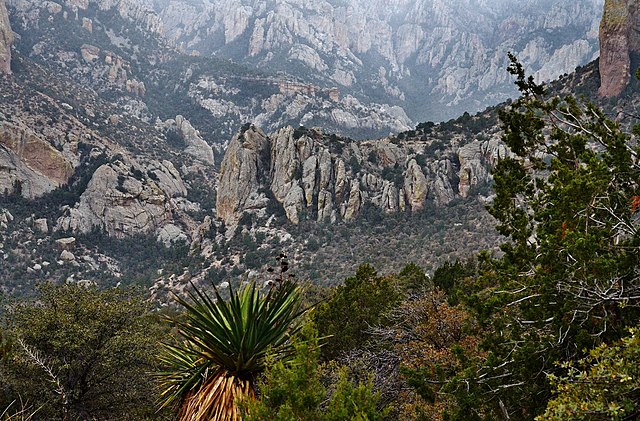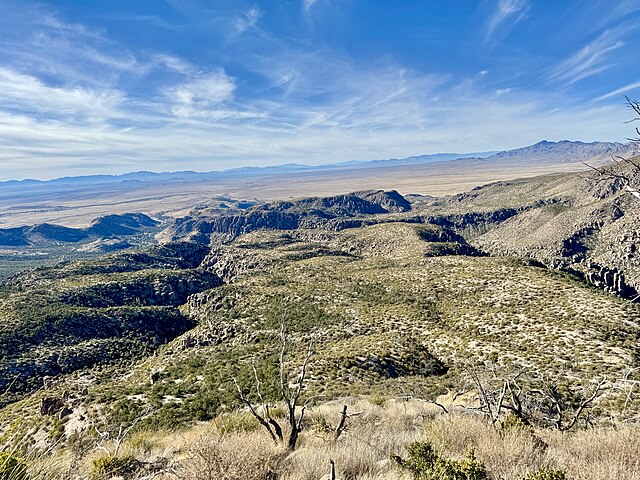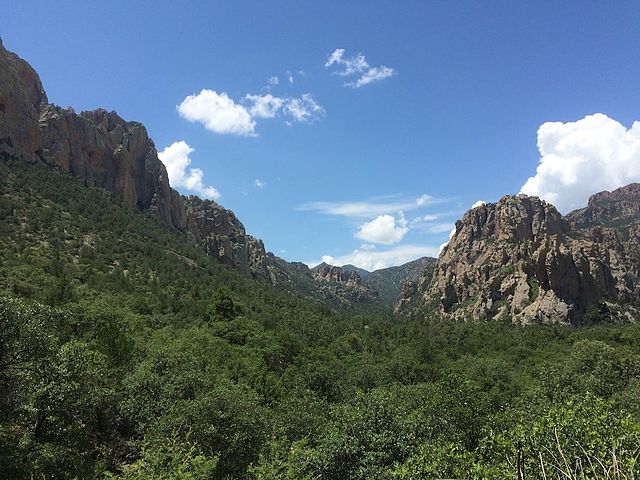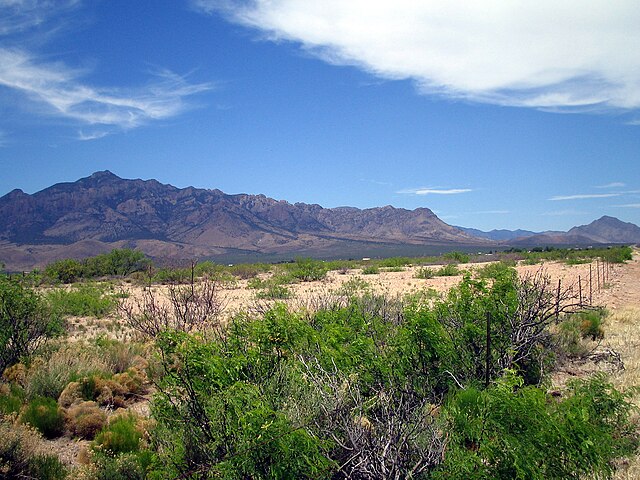Ever heard of a place where rock spires pierce the sky like nature’s own cathedral? That’s the Chiricahua Mountains in southeastern Arizona for you—a hidden gem that’s equal parts rugged and breathtaking. Tucked away from the hustle of city life, this range is a playground for hikers, birdwatchers, and anyone craving a dose of wilderness. So, why should you pack your bags and head here? Let’s dive into the top 10 adventures waiting for you in the Chiricahuas, with insider tips to make your trip unforgettable.
Why Visit the Chiricahua Mountains?
Picture this: you’re standing amidst towering hoodoos, with only the sound of wind rustling through pine trees. The Chiricahuas aren’t just another mountain range—they’re a geological wonderland shaped by volcanic eruptions millions of years ago. Known as the “Sky Islands,” these peaks rise dramatically from the desert, creating unique ecosystems where you can spot everything from black bears to rare birds. Whether you’re a thrill-seeker or just need a break from the daily grind, this place has something for everyone. Curious about what makes it so special? Keep reading.
A Geological Masterpiece
The Chiricahuas are like nature’s sculpture garden. Formed by a massive volcanic eruption 27 million years ago, the range is dotted with rhyolite formations—think hoodoos, pinnacles, and balanced rocks that defy gravity. Walking through these landscapes feels like stepping onto another planet. The Chiricahua National Monument, often called the “Wonderland of Rocks,” showcases these formations best. Ever wondered how nature crafts such bizarre shapes? It’s all about erosion and time, carving out art that no human could replicate.
Sky Islands: A Biodiversity Hotspot

Ever seen a jaguar and a hummingbird in the same day? In the Chiricahuas, it’s possible. The Sky Islands are a meeting point for species from the Rocky Mountains and Mexico’s Sierra Madre. This mash-up creates one of the most biodiverse regions in North America. You might spot coatimundis scampering through canyons or hear the haunting call of a Mexican spotted owl at dusk. For wildlife lovers, it’s like hitting the jackpot. Bring binoculars—you’ll need them.
Top Hiking Trails to Conquer
If hiking’s your thing, the Chiricahuas are a dream come true. With over 80 miles of trails, there’s a path for every skill level. From leisurely strolls to heart-pounding climbs, these trails lead you through canyons, forests, and jaw-dropping vistas. Ready to lace up your boots? Here are the must-do hikes that’ll leave you speechless.
Echo Canyon Loop: A Beginner’s Delight
New to hiking or just want a chill adventure? The Echo Canyon Loop is your go-to. This 3.3-mile trail winds through the heart of Chiricahua National Monument, serving up close-up views of those iconic rock formations. The trail’s gentle slopes make it family-friendly, but the scenery is anything but tame. Pro tip: start early to catch the sunrise—it’s like watching the rocks glow. Can you imagine a better way to kick off your day?
Heart of Rocks Loop: For the Adventurous
Want to feel like you’re in a Dr. Seuss book? The Heart of Rocks Loop is a 7.3-mile trek that takes you to quirky formations like Punch and Judy Rock and Big Balanced Rock. It’s moderately challenging, with some steep sections, but the payoff is worth every step. Pack a lunch and linger at the viewpoint—it’s like having a front-row seat to nature’s theater. Trust me, your camera will thank you.
Some trails, like Heart of Rocks, can feel like a maze with all the rock formations. Download offline maps or grab a paper map from the visitor center. Cell service is spotty, so don’t rely on your phone. A little prep goes a long way in keeping your adventure stress-free.
Birdwatching: A Feathered Paradise
Calling all bird nerds! The Chiricahuas are a birdwatching mecca, with over 200 species flitting through the forests and canyons. From elegant trogons to red-faced warblers, this is the place to check off your bird list. Why’s it so special? The mix of habitats—desert, woodland, and riparian zones—creates a buffet for birds. Grab your field guide and let’s explore the best spots.
South Fork Trail: Trogon Territory
The South Fork Trail in Cave Creek Canyon is legendary among birders. It’s one of the few places in the U.S. where you might spot an elegant trogon, a vibrant bird that looks like it flew straight out of a tropical jungle. The 6-mile round-trip trail follows a shady creek, making it a pleasant hike even in summer. Listen for the trogon’s distinctive bark—it’s your clue to look up. Ever dreamed of seeing a bird that rare? This is your shot.
Stargazing: A Celestial Show
When the sun dips below the horizon, the Chiricahuas put on a different kind of show. Thanks to minimal light pollution, this is one of the best places in Arizona for stargazing. The night sky here is like a canvas splashed with diamonds. Whether you’re a casual observer or an astronomy buff, you’re in for a treat. Here’s how to make the most of it.
Bonita Canyon Campground: Your Stargazing Base
Book a spot at Bonita Canyon Campground for front-row seats to the cosmos. Bring a blanket, lie back, and watch the Milky Way come alive. If you’ve got a telescope, even better—Jupiter’s moons and Saturn’s rings are within reach. Ever felt like you could touch the stars? Here, you just might.
Pro Tip: Night Photography
Want to capture the starry sky? Use a tripod and a long exposure setting on your camera. Aim for a 15- to 30-second shutter speed to let the stars pop without turning them into streaks. It’s like painting with light, and the results are magical.
History and Culture of the Chiricahuas
The Chiricahuas aren’t just about nature—they’re steeped in human history. This land was home to the Chiricahua Apache, whose resilience and ingenuity shaped the region. Later, settlers, miners, and soldiers left their mark. Want to step back in time? Here’s where to start.
Faraway Ranch: A Pioneer Legacy
Tucked in Bonita Canyon, Faraway Ranch tells the story of Swedish immigrants who built a life in this rugged land. The historic ranch house, now a museum, offers guided tours that bring the past to life. Strolling through the rooms, you can almost hear the creak of wagon wheels. It’s like flipping through a history book, but way more fun.
Apache Heritage: A Deeper Connection
The Chiricahua Apache called these mountains home long before settlers arrived. Their leader, Cochise, used the range’s canyons as a stronghold. Visit the Chiricahua National Monument visitor center for exhibits on Apache culture, or join a ranger-led talk to learn more. It’s a reminder that this land has stories older than the rocks themselves.
Outdoor Adventures Beyond Hiking

Hiking’s just the start. The Chiricahuas offer a smorgasbord of outdoor fun, from rock climbing to horseback riding. If you’re itching for something different, these activities will get your adrenaline pumping.
Rock Climbing: Scale the Pinnacles
Those towering rock formations aren’t just for looking at—they’re a climber’s paradise. Areas like Cochise Stronghold offer routes for all levels, from beginner-friendly slabs to expert-only overhangs. The granite here is grippy, making it a joy to climb. Ever wanted to conquer a peak? This is your chance.
Camping: Sleep Under the Stars
Nothing beats waking up to the smell of pine and the sound of birds. The Chiricahuas have campgrounds for every vibe, from developed sites at Bonita Canyon to primitive spots in the backcountry. Rustler Park is a favorite for its high-altitude views. Pack a cozy sleeping bag and let the mountains lull you to sleep. Can you think of a better way to unplug?
Photography: Capture the Magic
Whether you’re a pro with a DSLR or just snapping pics on your phone, the Chiricahuas are a photographer’s dream. Sunrise at Massai Point paints the rocks in golden hues, while Cave Creek Canyon offers lush, green backdrops. Want a tip? Shoot during the golden hour for that soft, dreamy light. It’s like nature’s Instagram filter.
Planning Your Trip: Practical Tips

Ready to hit the road? Here’s the lowdown on making your Chiricahua adventure smooth and stress-free. From getting there to packing right, I’ve got you covered.
How to Get There
The Chiricahuas are remote, about 120 miles southeast of Tucson. The closest major airport is Tucson International, where you can rent a car for the 2-hour drive. The road to Chiricahua National Monument is paved, but some backcountry areas require high-clearance vehicles. Plan for a scenic drive—it’s like a warm-up for the adventure ahead.
Best Time to Visit
Spring (March-May) and fall (September-November) are prime time, with mild temps and vibrant wildflowers. Summer’s hot but great for high-altitude trails, while winter brings occasional snow and fewer crowds. Check weather forecasts—flash floods can hit canyons hard. Want to dodge the heat? Aim for early morning starts.
Packing Essentials
Pack layers, as temps swing from chilly mornings to warm afternoons. Sturdy hiking boots, a reusable water bottle, and sunscreen are non-negotiable. Toss in a first-aid kit and a headlamp for safety. Oh, and don’t forget snacks—trail mix is your friend. Think of your backpack as your survival kit, minus the drama.
Where to Stay and Eat
From cozy cabins to rustic campsites, the Chiricahuas have options for every budget. Food’s a bit trickier—this isn’t a place for fast-food chains, so plan ahead.
Lodging Options
Portal, a tiny town near Cave Creek Canyon, has charming B&Bs and vacation rentals. For a true wilderness vibe, camp at Bonita Canyon or Sunny Flat. Want something in between? Check out lodges in nearby Willcox. It’s like choosing between a hotel pillow and a starry sky—both have their charm.
Dining Tips
Restaurants are scarce, so stock up on groceries in Willcox or Douglas. Local spots like Portal Peak Lodge serve hearty meals, but hours are limited. Pack a cooler with sandwiches and fruit for trail lunches. Nothing tastes better than a PB&J with a mountain view, right?
Responsible Exploration
The Chiricahuas are pristine, and keeping them that way is up to us. Follow Leave No Trace principles: pack out trash, stick to trails, and respect wildlife. Fires are a big risk, so check restrictions before sparking up. By treading lightly, you’re ensuring this paradise stays wild for years to come.
Conclusion
The Chiricahua Mountains are more than a destination—they’re an escape into nature’s masterpiece. From hiking among hoodoos to spotting rare birds and stargazing under a sky full of wonders, this Arizona gem offers adventures that feed your soul. Whether you’re chasing trails, history, or just some peace, the Chiricahuas deliver. So, what’s your next step? Grab your gear, plan your route, and let these mountains show you why they’re one of the Southwest’s best-kept secrets. Your adventure starts now!
Frequently Asked Questions
- Are the Chiricahua Mountains good for beginner hikers?
Absolutely! Trails like Echo Canyon Loop are short, scenic, and easy enough for newbies, while still wowing with stunning views. - Can I visit the Chiricahuas year-round?
Yes, but spring and fall are ideal for mild weather. Summer’s hot, and winter can bring snow, so check conditions before you go. - Is Chiricahua National Monument worth the drive?
Totally! The “Wonderland of Rocks” and easy access to trails make it a must-see for nature lovers. - Are there guided tours in the Chiricahuas?
Yes, ranger-led programs at Chiricahua National Monument cover history and geology. Local outfitters also offer guided hikes and birdwatching trips. - What wildlife might I see in the Chiricahuas?
You could spot black bears, coatimundis, trogons, or even a jaguar if you’re super lucky. Bring binoculars for safe viewing!

